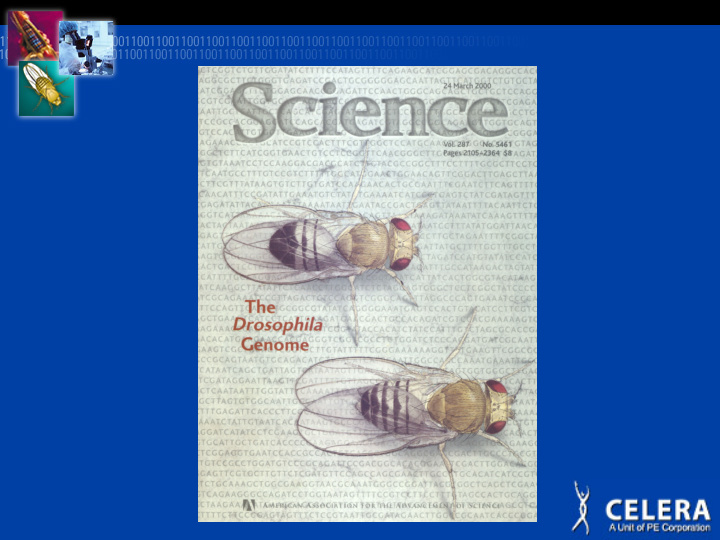



Whol e Gen ome Sh ot gun S equencing Whol e Gen ome Sh ot gun S equencing
Shotgun DNA Sequencing (Technology) DNA target sample SHEAR SIZE SELECT End Reads (Mates) LIGATE & Primer CLONE SEQUENCE Vector
Shotgun DNA Sequencing (Computation) Unknown “ Target ” DNA Sequence Randomly Sample G = 100Kbp Target Length ( “ Shotgun ” ) Fragments (e.g., BAC, P1, PAC) F = 1600 # of Fragments L = 500 Avg. Fragment Length N = FL = 800Kbp Total Bases Sequenced c = N/G = 8 Avg. Coverage Fragments ● UNKNOWN ORIENTATION ● SEQUENCING ERRORS Fragment ● INCOMPLETE COVERAGE Assembly Software ● CONSTRAINTS (MATES) ● REPEATS Layout Consensus Contigs
Whole Genome Sequencing Approaches u Hierarchical HGP Approach: Target Physical Mapping Minimum Tiling Set (~30,000 BACs Shotgun Sequencing for human) – 2 separate processes – maps very hard to complete, libraries unstable – must make shotgun library of each BAC + infrastructure is already developed + quality of outcome is known
Whole Genome Sequencing Approaches u Whole Genome Shotgun Sequencing: – Collect 10x sequence in a 1 -1 ratio of two types of read pairs: ~ 70million reads for Human. Short Long 2Kbp 10Kbp – Collect 10-15x BAC inserts and end sequence: ~ 300K pairs for Human. – Early simulations showed that if repeats were considered black boxes, one could still cover 99.7% of the genome unambiguously. BAC 3 ’ BAC 5 ’ + single process, three library constructions – assembly is much more difficult
Sequencing Factory • 300 ABI 3700 DNA Sequencers installed • 50 Production Staff • 40 Support Staff (R&D, QC/QA, Service) • 20,000 sq. ft. of wet lab • 20,000 sq. ft. of sequencing space • 800 tons of A/C (160,000 cfm) • 4,000 amps electrical service
True vs. Repeat-Induced Overlaps A B implies TRUE A B OR REPEAT- INDUCED A B
Assembly Pipeline 167:41 cpu hrs. for Dros Mask heterochromatin and ribo-DNA, Screener Tag known interspersed repeats. 8:37 Find all overlaps ³ 40bp allowing 6% mismatch. Overlapper (1000X Blast) 86:25 ASSEMBLER CORE: Unitiger • Compute all consistent sub-assemblies = unitigs • Identify those that cover unique DNA = U-unitigs 38:29 • Scaffold U-unitigs with confirmed shorts & longs Scaffolder • Then with BAC ends 4:12 • Fill repeat gaps with: I. Doubly anchored mates Repeat Rez I Repeat Rez I, II, III II. O-path confirmed singly-anchored mates 5:44+4:21+19:53 III. Greedy path completion using QVs Consensus Bayesian “ SNP ” consensus using quality values. Occurs throughout assembler core. (~25)
Assembly Progression (Macro View)
start and stop site predictions Proteomics Discovery (insert browser slide) 3.0 Unique identifiers Splice site predictions Homology based exon predictions computational exon predictions Tracking Consensus gene information structure (both strands)
Recommend
More recommend